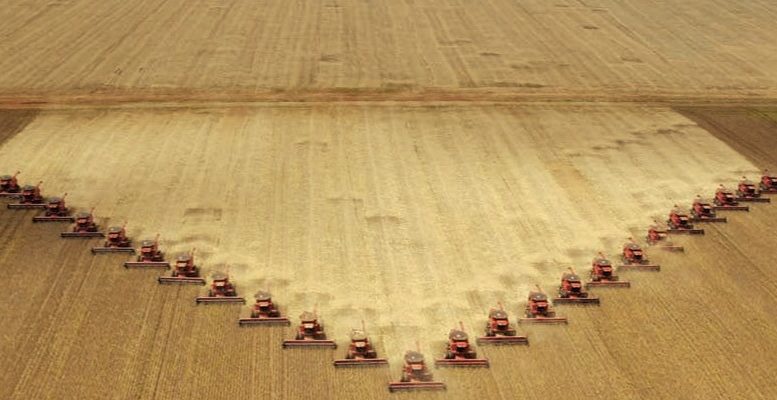It’s a simple question: Will we be able to feed everyone if the population of the planet rises from about 7 billion people today to 9-10 billion in 2050? Several experts at Citi have tried to anwer this question, starting from mentioning Thomas Malthus’ Essay on the Principles of Population, and concluding that food industry in its current format is unsustainable for future demand.
When Malthus published his famous paper in 1798 the global population was only 800 million and despite an almost nine-fold increase in population, his predictions luckily have not been realized. Advances in agriculture, food manufacturing, and food distribution together have increased the efficiency of the global food industry to supply an ever-growing population. But if we look at today’s global food industry, we find that it is unsustainable to keep up with a 60-70% increase in food demand over the next 30 years. The quote below by José Graziano da Silva, Director-General of the Food and Agriculture Organisation of the United Nations (FAO), captures this fact:”We need to change the whole food system; we need to change the way we produce food, and the way we eat it.
What’s wrong? Three main issues plague the global food industry: sustainability, waste, and nutrition. According to analysts at Citi, on the sustainability front, agriculture today consumes 70% of surface and groundwater and uses 50% of habitable land while the entire food industry is responsible for up to one-third of human-caused greenhouse gas emissions. Globally, around 1.3 billion tonnes of food — almost one-third of all food produced — gets lost or wasted every year. Malnutrition — in the form of hunger and undernourishment, obesity or micronutrient deficiencies —affects almost 40% of the global population and the impacts on public health and economic development now cost the global economy almost $3.5 trillion per year.
The answer is not simple. But the first step towards a solution is to understand the problem ahead of us — identify the need for more sustainable agriculture, more efficient manufacturing and distribution, and consistent delivery of nutritious food.
The global food industry is a complex system, including companies that supply inputs to agriculture production, farmers, processing, trading and manufacturing firms, retail outlets, and finally end users.
Food production grew more than threefold since the early 1960s, growth that was primarily achieved through crop intensification and yield improvements. However, the system today is inefficient and unsustainable with one-third of all food produced wasted throughout the supply chain at a value of almost $1 trillion per year. The agriculture sector alone uses 70% of the world’s freshwater supply and 50% of total habitable land, while the food system (including agriculture, processing, manufacturing, and distribution) is responsible for up to 30% of global greenhouse gas (GHG) emissions.
The global food system has also failed to feed and nourish everyone – over 800 million people are still hungry, while at the same time over 650 million people are currently obese. Many countries face the challenges of both hunger and over-consumption and it is estimated that 1 in 3 people on the planet suffer from diet-related malnutrition.
Over the next few decades, food demand is expected to increase by 60-70%. Meeting this demand sustainably with less waste and better nutrition for all is challenging. If we continue with ‘business as usual’, we may need up to 67% and 65% more farm land and irrigation water withdrawals, respectively, to be able to feed the expected 9-10 billion people on the planet by 2050.
This in turn could translate to an 87% overall increase in agriculture-related greenhouse gas emissions. In terms of nutrition, if we continue on the same path as today, the number of people suffering from diet-related malnutrition worldwide could increase from 1 in 3 to 1 in 2.
However, the industry is changing. Technology and scientific innovation are helping to increase the productivity of agriculture production while at the same time reduce unsustainable water and land use. New innovation is coming to the forefront such as gene editing and precision agriculture, which could have a positive impact on agriculture production. Other innovations such as vertical farming and alternative proteins have the potential to disrupt current food supply chains.
Consumers are also demanding healthier products, natural ingredients, and more traceability which is encouraging the food manufacturing industry to produce more nutritious and healthier foods and improve transparency of their supply chain.
There are huge opportunities for the Southern Hemisphere to increase the production of food to meet future demand with Brazil, Argentina and Sub-Saharan Africa in particular with further room to expand crop harvests through higher planted area and yield improvements.
Solving the issues faced by the global food sector has become an international priority. Zero Hunger (SDG 2) is the second UN sustainable development goal (SDG) with the aim of ending hunger by 2030 and malnutrition by 2025, doubling agriculture productivity and improving the income of small food producers, ensuring sustainable food production and maintaining the genetic diversity of seeds, cultivated plants, and domestic animals. Responsible Consumption & Production (SDG 12) addresses sustainable consumption and production patterns, including a target on food waste which aims to halve per capita global food waste at the retail and consumer levels by 2030 and reduce food losses along production and supply chains. The 2017 Global Nutrition Report (Development Initiatives, 2017) also highlights that improving nutrition can have a multiplier effect across the SDGs and can help to support equity and inclusion, provide infrastructure for economic development, and enhance peace and stability.
Can we get there? Citi thinks so, but it will require (1) easier access to financing; (2) the removal of distortions in the agriculture and food market; (3) vertical integration across the supply chain; (4) easier and faster access to the market for innovation and technology; (5) better data and information; and (6) better healthier products and a change in diets to continue to prove Malthus wrong.





